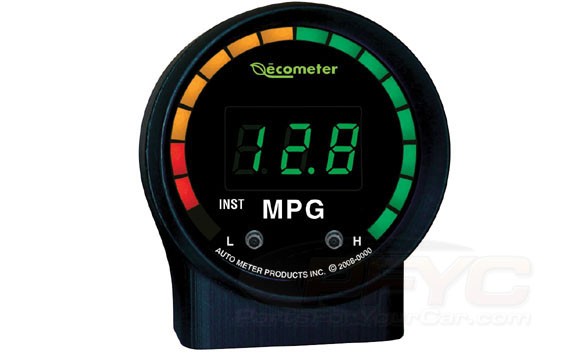After using an OBD2 fuel consumption gauge (ecometer) for several tank fill-ups, it’s time to share a comprehensive review. This device, designed to provide real-time fuel economy data, boasts features like instant and average MPG, speed (MPH), and engine speed (RPM). But how accurate and useful is it in practice?
Decoding the Ecometer: Modes and Calibration
This particular ecometer offers four operating modes: instant MPG, average MPG, MPH, and RPM. Of these, the average MPG (MPG-avg) proves most valuable. The other readings fluctuate excessively, making them less practical for real-world driving.
A single calibration setting, represented as EFF (Efficiency), significantly impacts the MPG readings. The default setting is EFF=100. It’s adjustable within a range of 60 to 140, and although displayed as an integer, it likely represents a percentage value (e.g., 100 = 100% = 1.00).
Initial testing revealed the default EFF=100 setting overestimated the actual MPG. Comparing the ecometer’s average MPG with calculated MPG from tank fill-ups showed consistent discrepancies:
- Tank 1: 0.893 = (1.00)*(34.1 mpg / 38.2 MPG)
- Tank 2: 0.861 = (1.00)*(32.1 mpg / 37.3 MPG)
- Tank 3: 0.935 = (1.00)*(34.5 mpg / 36.9 MPG)

Fine-Tuning for Accuracy: Calibration Formula
Adjusting the EFF setting to 90 yielded a much closer correlation:
- Tank 4: 0.887 = (0.90)*(33.8 mpg / 34.3 MPG)
This suggests an EFF value between 0.88 and 0.90 provides the most accurate reading for this particular vehicle (a Pontiac with a Toyota 1.8L 2ZR-FE engine). Further testing will confirm this optimal setting.
While not explicitly detailed in the manual, the calibration formula is:
EFF(new) / EFF(old) = mpg(tank) / MPG(meter)
Therefore:
*EFF(new) = EFF(old) [mpg(tank) / MPG(meter)]**
Where:
- EFF(new): The new calibration value derived from comparing tank fill-up MPG to the ecometer’s average MPG and the old EFF value.
- EFF(old): The ecometer’s calibration setting during the test period.
- mpg(tank): Calculated MPG from a full tank (miles driven divided by gallons used).
- MPG(meter): The average MPG displayed by the ecometer.
Limitations and Observations: Speed and RPM
This ecometer lacks correction factors for distance (MPH) or fuel volume (gallons). Only the EFF value adjusts fuel economy calculations, limiting its adaptability to vehicle modifications like tire or wheel size changes. Both RPM and MPH readings display to three digits, but their inherent instability renders them less reliable. The RPM is displayed in thousands (e.g., 1.42 represents 1420 RPM), limiting accuracy to within 10 RPM. The MPH reading, while displaying to the tenths place (e.g., 64.9 mph), fluctuates too rapidly to provide a consistent reading.
Conclusion: A Useful Tool with Calibration Considerations
This auto meter OBD2 fuel consumption gauge provides a valuable tool for monitoring fuel economy. However, accurate readings depend on proper calibration using the provided formula. While the average MPG function proves reliable after adjustment, the fluctuating speed and RPM readings limit their usefulness. The lack of correction factors for distance and fuel volume presents a notable limitation for vehicles with modifications.
